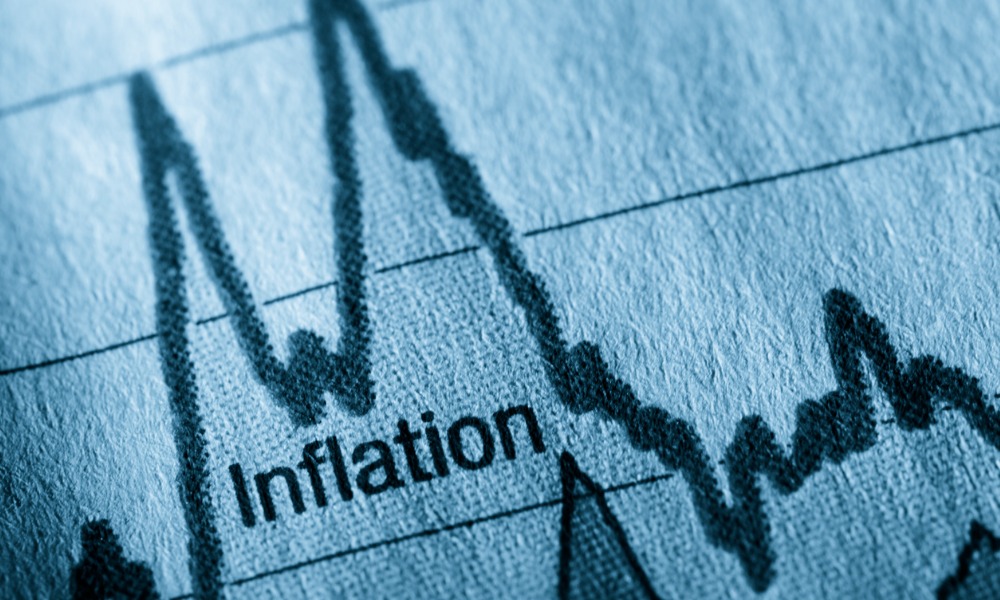Chief Market Strategist outlines why he thinks that inflation should rest at its lower bounds sooner and for longer than many expect

Inflation should rest at a higher bound over the next ten years than it did in the decade before COVID. That forecast has been bandied about in the past few years with enough regularity to appear like consensus. Underlined by the ‘four Ds’ of deglobalization, decarbonization, demographics, and deleveraging, analysts have predicted that price increases will remain elevated. With higher inflation, too, we can expect interest rates to rest in a higher band as well. Central banks inflation target of two per cent should function more as a floor than a ceiling, and neutral interest rates will rest around three per cent. That appears to be the consensus.
Jim Thorne disagrees. The Chief Market Strategist at Wellington-Altus does not believe inflation will rest much higher than it did pre-COVID over the long-term. Thorne explained why he thinks inflation should remain under control. He holds this view in part due to action he predicts either policymakers or credit markets will take to restrain government spending. He also believes that demographic forces should actually work to curb inflation, and that some of the other trends in the ‘four Ds’ are overblown.
“I’ve heard the narrative that we’re going into a new high inflation environment three times in my career,” Thorne says. “But markets, left to their own devices, are inherently deflationary. Debt to GDP is deflationary. Technology is deflationary. Demographics, I would suggest, are inherently deflationary. So I don’t buy it. The fundamental foundations are inherently deflationary.”
Deglobalization has been one of the headline trends that analysts point to predicting higher inflation. The narrative follows that since 2018 and the imposition of key tariffs on Chinese imports by the Trump administration, global supply chains have retrenched. There has been a shift from ‘just in time’ to ‘just in case’ logistics, which is more expensive, and many industries have been moved out of countries like China which are viewed as hostile to the US and the West.
Thorne, however, cites a study from the Council on Foreign Relations which argues that what we’ve come to know as globalization has been far more of a regionalization story. The EU, Asia Pacific, Latin America and other key regional blocs have underpinned the shift in global production and consumption. Thorne says that these regional blocs have been less impacted by some of those bigger shifts. We simply fail to notice that in North America because we live in one of the few regions that has less rapidly adopted regional integration.
One of the key drivers of US and — to a lesser extent — Canadian inflation has been significant increase in government spending since the onset of the COVID-19 pandemic. The US debt to GDP ratio has risen to around 125 per cent. While neither presidential candidate is currently talking about deficits, Thorne believes that if there isn’t a significant pullback in debt levels by late 2025 or early 2026, credit markets will revolt and force the US into a ‘Liz Truss moment’ demolishing the value of the greenback and tanking US equities. Whether the next administration makes meaningful changes to spending levels, or credit markets force them to, Thorne sees that inflationary driver coming off, resulting in lower CPI increases.
Demographics are also cited as a key driver for inflation, with aging baby boomers in the developed world demanding more in the way of healthcare, driving healthcare costs higher. Thorne acknowledges that healthcare inflation may rest higher, but he emphasizes that the pressure baby boomers place on healthcare will likely be taken off demand for other goods and services. On aggregate, however, he sees the broad trends of global demographics as more deflationary.
Perhaps the most important part of Thorne’s inflation thesis is that rate hikes have actually served to drive up inflation in key areas. Shelter inflation in the US is now holding inflation rates higher. He sees interest rate increases in a society with such a high degree of leverage as inflationary, rather than deflationary.
While Thorne sees the fundamentals of the market and economy as inherently deflationary, he notes that the ongoing impacts of dislocation from the pandemic will continue to be felt in the form of inflation. He believes, though, that inflation will normalize and normalize lower than many others predict. He sees the argument other analysts are making, and remains open to being corrected, but he also emphasizes that while the shocks of the pandemic continue to work through the economy, we can’t know for certain where inflation will end up resting.
“Inflation predictions might be right, but we won’t know that until 2027 or 2028, we need to go through the echo of the COVID adjustment,” Thorne says. “We still haven’t gone through the full COVID experience, and I would expect that’s going to be done between now and 2026.”



